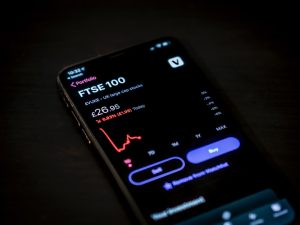Leverage is a common term used in forex trading, and it refers to the use of borrowed capital to increase the potential return on an investment. In other words, leverage allows traders to control a larger position than their actual investment. It is a powerful tool that can significantly amplify profits, but it can also lead to significant losses if not managed properly. In this article, we will explain what leverage is in forex trading and how it works.
What is Leverage in Forex Trading?
Leverage is the ratio of the trader’s own funds to the amount borrowed from a broker to open a position. It is usually expressed as a ratio, such as 1:50, 1:100, 1:500, or even higher. For example, if a trader has a leverage of 1:100 and wants to open a position worth $10,000, they would only need to deposit $100 as margin with the broker. The remaining $9,900 would be borrowed from the broker, allowing the trader to control a position worth $10,000.
Leverage in forex trading is essential because it allows traders to trade with smaller amounts of capital than would otherwise be necessary. This is particularly important for new traders who may not have a lot of money to invest in the market. With leverage, traders can take advantage of small price movements in the market and generate profits even with a small investment.
How Does Leverage Work?
Let’s say a trader has $1,000 in their trading account and wants to open a position on a currency pair that requires a margin of $500. Without leverage, the trader would only be able to open a position worth $500. However, with a leverage of 1:100, the trader can open a position worth $50,000 (100 x $500).
The advantage of using leverage is that it allows traders to magnify their profits. For example, if the trader’s position increases by 1%, they would earn a profit of $500 (1% of $50,000) instead of just $5 (1% of $500). However, the downside is that leverage also magnifies losses. If the trader’s position decreases by 1%, they would lose $500 instead of just $5.
Therefore, it is crucial for traders to use leverage wisely and to understand the risks involved. It is recommended that traders never use too much leverage, as it can lead to significant losses. Generally, a leverage of 1:50 or 1:100 is considered safe, but it ultimately depends on the trader’s risk tolerance and trading strategy.
Benefits of Leverage in Forex Trading
1. Increased Profit Potential: Leverage allows traders to control larger positions than their actual investment, increasing the potential for profits.
2. Flexibility: Leverage allows traders to take advantage of small price movements in the market, even with a small investment.
3. Accessibility: Leverage makes forex trading accessible to new traders who may not have a lot of money to invest in the market.
4. Diversification: With leverage, traders can diversify their portfolio and trade multiple currency pairs simultaneously.
Risks of Leverage in Forex Trading
1. Amplified Losses: Leverage magnifies losses as well as profits. Therefore, traders need to be careful not to use too much leverage and to manage their risk properly.
2. Margin Call Risk: If a trader’s position moves against them, and they do not have sufficient funds in their account to cover the loss, the broker may issue a margin call, requiring the trader to deposit additional funds to keep the position open.
3. Limited Control: With leverage, traders have limited control over the market. Price movements can be unpredictable, and traders need to be prepared for unexpected losses.
Conclusion
In conclusion, leverage is a powerful tool that can significantly amplify profits in forex trading. However, it also comes with significant risks that traders need to be aware of. It is crucial for traders to use leverage wisely and to manage their risk properly. Ultimately, the key to successful forex trading is to have a solid trading strategy, discipline, and risk management.





